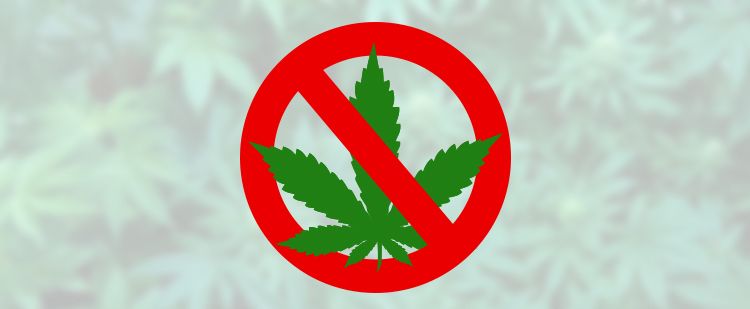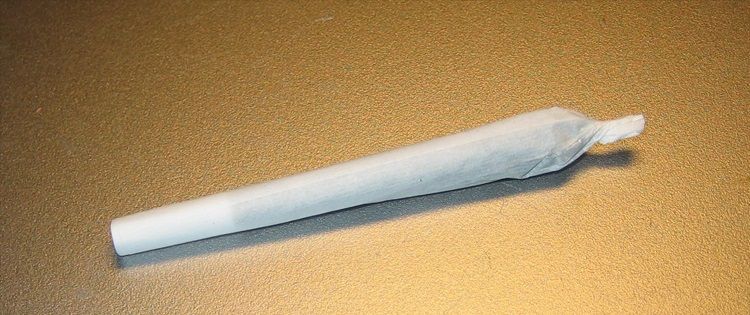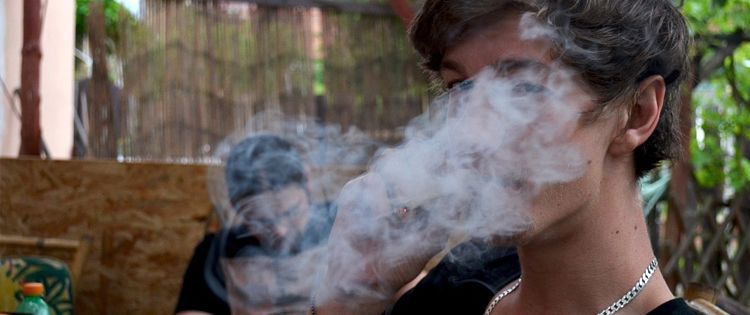Panama became independent from Colombia in 1903 and a couple weeks later the United States set up diplomatic relations with the newly formed republic in the form of the Hay-Bunau-Varilla Treaty.
The Treaty provided the US with a 10 miles wide strip across the Central American country to construct a canal to connect the Atlantic and Pacific Oceans for transportation.
The US was in control of the newly established Canal Zone, while it guaranteed the independence of Panama as well as a US$10 million cheque and a quarter of a million dollars kickback annually starting after 9 years.
Cannabis grows abundantly in this part of the world and US soldiers caught up with marijuana from the locals pretty quickly.

The Panama Canal was constructed by 1914 however, there were no police records of marijuana consumption until 1916 when the police chief was told about the Puerto Rican Regiment smoking a weed which caused unusual symptoms.
Upon police checking with the officers at the Puerto Rican Regiment, they were surprised and stated that they knew nothing.
By mid-1922, it became obvious that smoking marijuana had become common among soldiers on duty in the Canal Zone. In May 1922, the Provost Marshal from the Canal Zone contacted the Chief of Board of Health concerning the nature of marijuana and shortly after the Chief of Police also made an inquiry wondering if marijuana was a narcotic within the meaning of the Narcotic Drug Act.
On January 20, 1923, the US Military prohibited the possession of marijuana, however, it must have done very little to curb its use as a few months later in April, the Governor appointed a committee to investigate the use of marijuana and to recommend steps that should be taken to prevent its use.

The committee included the following officials:
- Chief of the Division of Police and Fire
- District Attorney
- Chief Health Officer of the Panama Canal,
- Chief of the Board of Health Laboratory
- Chief of the Division of Civil Affairs,
- Department Judge Advocate,
- The Superintendent of Corozal Hospital for the Insane,
- A representative from the Medical Corps, U. S. Navy, acting in an advisory capacity
The investigation stretched from April until December and the findings of the Committee stated the following: (quoted from the Volume 73 of The Military Surgeon):
“There is no evidence that mariahuana, as grown here, is a “habit-forming” drug in the sense in which the term is applied to alcohol, opium, cocaine, etc., or that it has any appreciably deleterious influence on the individuals using it.”

“No steps be taken by the Canal Zone authorities to prevent the sale or use of mariahuana, and that no special legislation be asked for.”
Army officers in the Canal Zone were surprised and questioned the findings of the report and in June 1928 the Department Commander ordered another study into marijuana.
This time the study was to go on for a year and to examine all cases of suspected marijuana addiction and intoxication.
A year later in June 1929, the Department Surgeon reported to the Chief of Staff the following findings of the study (quoted from the Volume 73 of The Military Surgeon):
“The inquiry into the use of mariajuana by soldiers of the Department had been in effect a full year. The reports of the twelve months indicate that the use of the drug is not widespread and that its effects upon military efficiency and upon discipline are not great. There appears to be no reason for reviving the penalties formerly exacted for the possession and the use of the drug.”

Despite the obvious conclusions of both of these thorough studies, marijuana remained on the radar of senior Commanders and within a year and a half of the second study, the Committee was at it again.
This time they decided that they should study cannabis smoking soldiers in a hospital by a psychiatrist member of the board.
The Department Commander granted permission to hospitalize marijuana smokers from the Military and observe them for the study.
The observation included the following:
- thorough neuropsychiatric examination,
- clinical study of the individual after smoking marijuana, and
- clinical study of signs and symptoms following its withdrawal

It is explained in Volume 73 of The Military Surgeon as below:
“During the period from December 1931, to October 1932, for an average of six days in each case, thirty-four soldiers, collected from four posts in the Panama Canal Department, were observed in Gorgas Hospital for the effects of smoking mariajuana. These men, all known to be or suspected of being mariajuana smokers, volunteered to enter the hospital, tell all they knew about the use of mariajuana among soldiers in Panama and submit to any tests desired.”
The findings of the third study came to the same conclusion as the first two, however this time it also suggested that the commanders seem to have an issue with “morons and psychopaths”, who also happened to smoke weed, rather than the healthy minded soldiers that smoked weed.
The conclusion once again was that marijuana is not a habit forming drug (quoted from the Volume 73 of The Military Surgeon):
“Mariajuana, as grown and used on the Isthmus of Panama, is a mild stimulant and intoxicant. It is not a “habit forming” drug in the sense that the derivatives of opium and cocaine are such drugs, as there are no symptoms of deprivation following its withdrawal.”

Based on the findings, the Committee made the following recommendations (quoted from the Volume 73 of The Military Surgeon):
“1. The present military regulations prohibiting the introduction, sale, possession, or use of mariajuana on military reservations should continue in force, as they are believed to restrict the use of mariajuana among soldiers.
2. With the evidence obtained and considered by the committee no recommendations for further legislative action to prevent the sale or use of mariajuana in the Canal Zone, Panama, are deemed advisable under existing conditions.
While soldiers smoking marijuana is not a great threat to military discipline and operations, its use should be kept to a minimum by keeping the current military regulations in force. No restrictions need to be placed on marijuana outside the military bases is necessary, however.”
6 years after the Committee recommending no restrictions on marijuana outside the military base, the US government did the opposite and started the marijuana prohibition.
Share your views in the comment section below.
- Nimbin Medican – Educating Australians About Medical Cannabis - January 28, 2020
- Pill Testing and Roadside Drug Testing – When is it Appropriate to Test for Drugs? - August 2, 2019
- The Australian Cannabis Summit in Review - July 16, 2019


